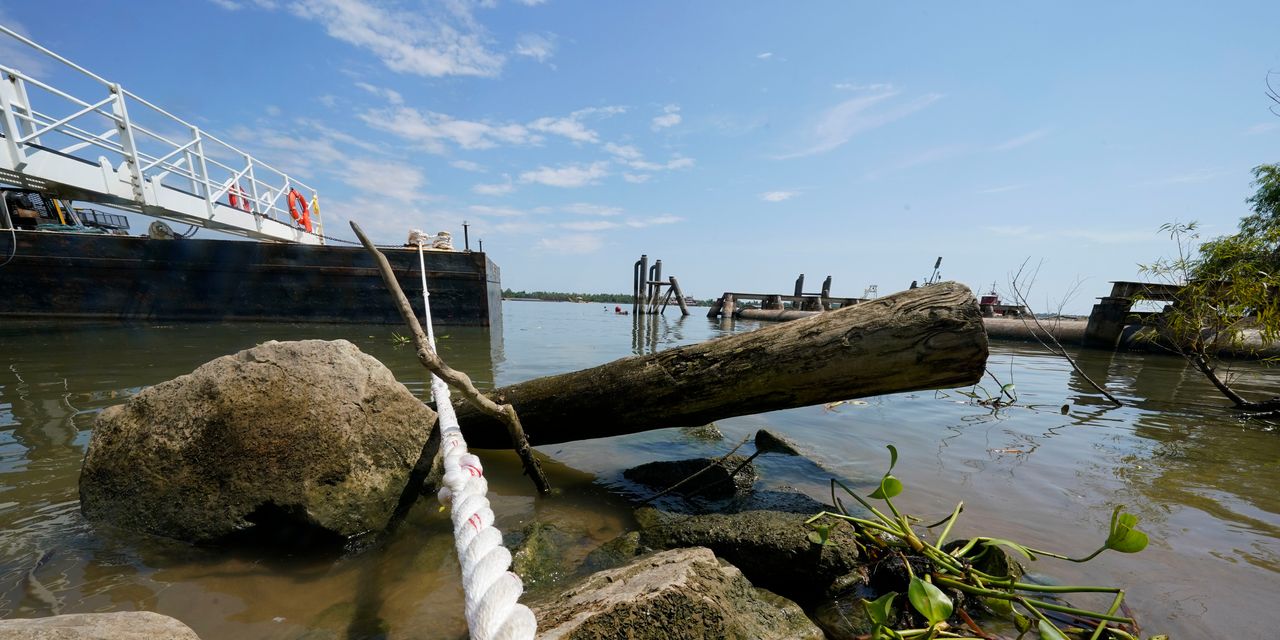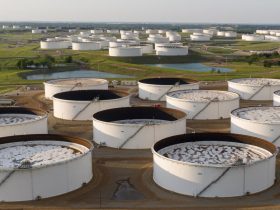With farmers and the barge industry again grappling with low Mississippi River water levels, grain shipments could be shifted to rail and truck, according to TD Cowen.
This week TD Cowen hosted a farmer sentiment webinar with Professor Michael Langemeier of Purdue University’s Department of Agricultural Economics and the director of the University’s Center for Commercial Agriculture. The top concerns for farmers were input costs, elevated interest rates affecting operating loans, machinery and land costs, and lower crop and livestock prices, with the exception of beef, according to TD Cowen.
The impact of Mississippi water levels was also cited. “One near-term concern for farmers is Mississippi water levels being low at certain points. This could divert more grain shipments to rail and truck at higher freight costs,” TD Cowen analyst Matt Elkott wrote in a note released Thursday. “The consolation for grain producers is that there is a good deal of capacity on both modes to accommodate incremental freight. Additionally, truckload rates are stuck in a malaise.”
Related: Low water levels along Mississippi River again present an opportunity for railroads, says analyst
The Gazette, based in Cedar Rapids, Iowa, reported that the Mississippi has reached near-historic lows for the second year in succession, slowing down river shipping and pushing up costs for barge companies.
The gage height of the Mississippi at St. Louis has fallen from 20.64 feet on May 16 to -1.01 feet on Thursday, according to data from the U.S. Geological Survey. Gage height, which is also known as “stage” is the height of water above a reference point.
Related: Low water levels along Mississippi River present a competitive opportunity for railroads, says analyst
In a note released last month, Raymond James analyst Patrick Tyler Brown wrote that low water levels along the Mississippi River could present opportunities for railroads. Last year Raymond James noted that Canadian National Railway Co.
CNR,
CNI,
is the primary rail operator along the Mississippi.
Low Mississippi water levels have also resulted in sea water intruding into the river in Louisiana, prompting the U.S. Army Corps of Engineers to fill barges with water upstream for shipment to water treatment plants. “Denser salt water moves upriver along the bottom of the river beneath the less dense fresh water flowing downstream,” the Army Corps of Engineers explained, in a statement released Monday. “Under normal conditions, the downstream flow of the river prevents significant upriver progression of the salt water. However, in times of extremely low volume water flow, such as what has been occurring this year, unimpeded salt water can travel upriver and threaten municipal drinking water and industrial water supplies.”
Opinion: Record low water levels on the Mississippi River in 2022 show how climate change is altering large rivers
An initial barge load of 500,000 gallons arrived at the Port Sulphur Water Treatment Facility in Plaquemines Parish, Louisiana, on Sunday. The Army Corps of Engineers is also working to increase the height of an underwater sill initially constructed in July at river mile 63.8.
Read the full article here













Leave a Reply